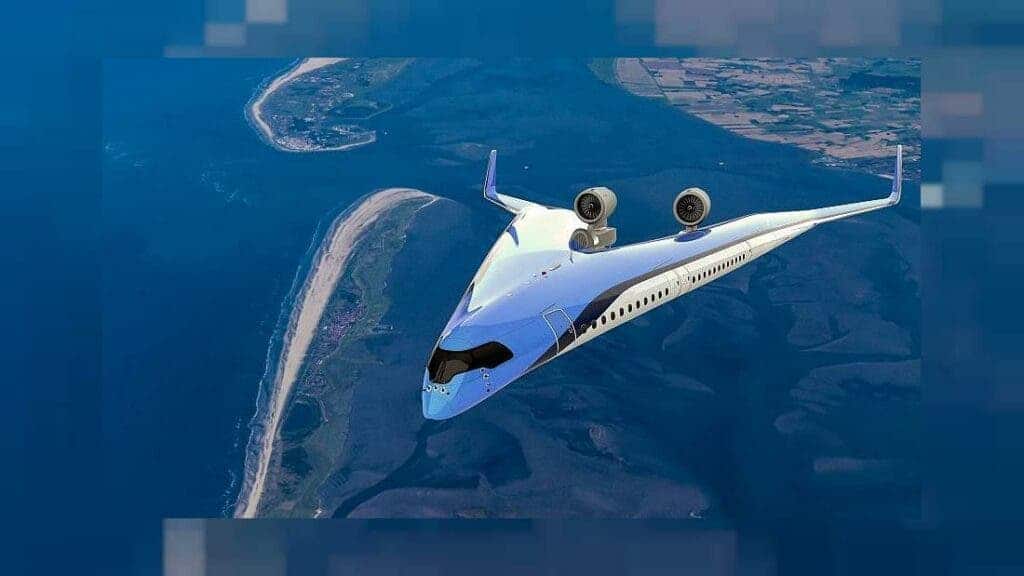
A usual V-shaped airplane with a futuristic oval-shaped cabin could one day zip through the sky much more efficiently and environmentally friendly than typical passenger planes currently in operation. According to the Dutch researchers who came up with this design, the “Flying-V” could cut fuel costs by as much as 20% while it takes over 300 passengers to their destination. It could also be powered by fuel cells to make it carbon neutral.
The Flying-V is the brainchild of Justuce Benad, an intern at Airbus in Hamburg who holds the patent, and Roelof Vos, an assistant professor at the Faculty of Aerospace Engineering at TU Delft University in the Netherlands, who is leading a team that is currently manufacturing and testing scale models of the design.
Typical passenger planes like the Boeing 737-800 or Airbus A320 have wings that stick out perpendicularly from the center of the tube-shaped fuselage, with the engines sitting underneath the wings. In order to balance the aircraft, extra weight has to be added to the cabin to counter the mass of the rest of the aircraft packed with over 300 passengers and their belongings.
By contrast, the Flying V’s wings are part of the fuselage, not separate. Passengers literally ride inside one of the two wings, with the cargo sitting at the back of the wings. The aircraft has no tail. Passengers enter the aircraft through two doors placed side by side that speed up boarding and deboarding and improve emergency evacuation.
The oval structure ought to reduce drag by a great deal, allowing the aircraft to consume less kerosene. But most likely, if it ever sees production, the Flying V would be powered by fuel cells that burn liquid hydrogen stores in pressurized tanks. This comes with its own drawbacks since hydrogen storage is huge, eating up 70% of the cargo volume. Aircraft running on fuel cells also have a significantly shorter range. However, it’s a necessary sacrifice in order to tackle the copious emissions generated by the aviation industry, which amount to as many emissions as Germany or Japan generate overall.
This is a radical overhaul, which means a lot of things could go wrong. Vos and colleagues at TU Delft, in collaboration with Airbus and KLM, only made a single test flight using a three-meter scaled version of the Flying V. However, this was a rudimentary proof of concept test which involved an engineer running down a field holding the model aircraft above his head. The model reportedly glided a few meters above the ground, while it was controlled remotely using a laptop, proving it is at least aerodynamic.
“It’s been two years of stressful, intensive work,” said chief engineer Malcolm Brown. “To see it in the air was worth all the hours”. The test flight was the culmination of years of work, and the moment the model took to the skies was understandably emotive.”
There is much more work ahead. Next, the engineers have to build and test a 13-meter scaled replica drone, which will be evaluated for handling, takeoff and landing dynamics, as well as noise.
Building a new passenger aircraft is an extremely expensive and lengthy process, which is why the researchers don’t have their hopes up for a prototype flying in the sky before 2041. But for Voss, the wait is all worth it.
“The Flying V will absolutely change the way we fly, ” he said. “Quite literally”.






